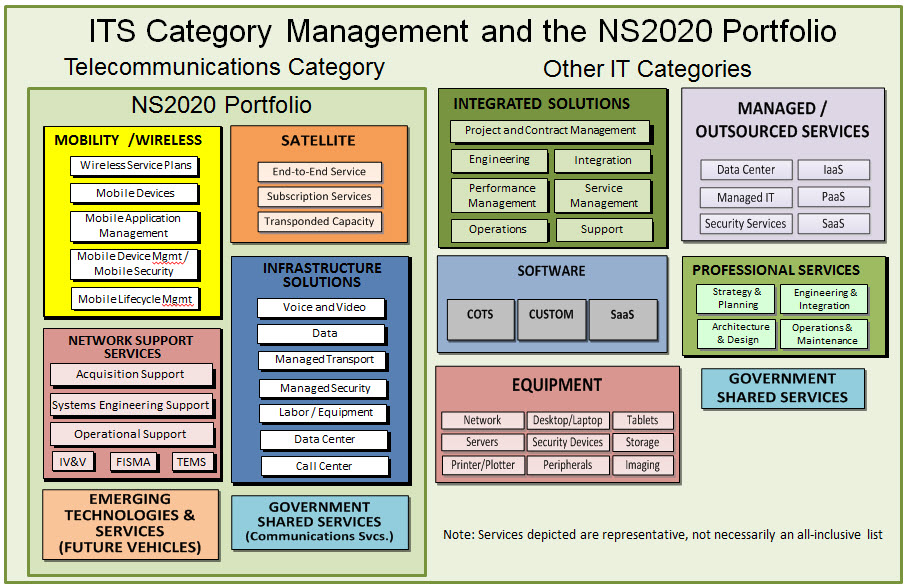(This blog post reflects my perspective as the government-wide IT Category Manager)
Today, the federal government spends more than $1 billion annually on mobile services. An agile and evolving federal workforce is driving an ever-increasing need for agencies to have the ability to meet their missions, and do their work securely anywhere, anytime, and on any device in order to serve U.S. citizens.
Fast-changing mobile technology and increased demand are putting pressure on agencies to determine how best to acquire, maintain, and manage mobile resources. So government needs a mobile plan that looks ahead. And that’s just what the Mobile Services Category Team (MSCT) aims to accomplish.
The Office of Management and Budget (OMB) Category Management Leadership Council (CMLC) set up the MSCT to develop and implement a government-wide strategic plan to increase efficiency and drive savings related to acquiring government mobile services. The cross-agency team looks at how agencies can best navigate the future of mobile services. OMB, GSA, and the departments of Defense, Homeland Security, and State lead the MSCT.
While they’re taking input from agencies across government and industry, the MSCT has already accomplished several goals, such as establish strategic objectives, prepare mobile device guidance, make plans for a mobile brokerage feasibility study, incorporate industry partners’ insights and expertise, and are taking on mobile reporting and data management.
MSCT Roadmap and Guidance
OMB’s August Mobile Services and Devices memo (M-16-20) assigns several responsibilities to the MSCT, and the first three are now complete. Documents from these tasks are posted on the Telecommunications Hallway in the Acquisition Gateway.
1. Mobile Services Roadmap – The MSCT published the roadmap so agencies can develop mobile tools and solutions that will conform to Category Management principles and best meet agency and user needs. It focuses on general-use needs similar for most agencies (also known as core commodity services). It also identifies another primary needs segment that requires customizing based on agency and mission. This second segment focuses on mobile applications and complex mobile solutions such as security and ID credentialing.
2. Mobile Device Procurement and Management Guidance – This guidance helps agencies select, procure, manage, and dispose of mobile devices. It focuses on what agencies can do to more efficiently manage devices, reduce costs, simplify processes, improve contractual terms, and meet government green initiatives.
3. Mobile Services Brokerage Model Feasibility Study: Project and Implementation Plan – This document explains how the MSCT will conduct a feasibility study for possible use of a brokerage approach to agency mobile acquisition efforts. Typically, smaller agencies have fewer in-house resources. The brokerage approach could support them by providing external support. MSCT’s goal is that no agency be left behind while improving management of mobility government wide.
MSCT Strategic Objectives
The MSCT has three primary objectives:
- Standardization – Define a common set of plans, devices, terms, conditions, and other mobility attributes that apply across contractors and agencies to drive competition based on quality and price.
- Simplification – Make it easier for agencies to acquire and manage mobility services and devices.
- Savings – Further reduce costs for wireless carrier services and other mobility category services.
Insights from Industry Partners
MSCT solicited and incorporated industry partners’ insights and feedback. In response to the RFI issued earlier this year, wireless carriers, systems integrators, and technology leaders gave their list of priorities:
- Simplify core product offerings to reduce complexity and cost
- Support ancillary service offerings and have flexibility to use open market offerings to streamline procurements
- Have standard terms and conditions that require less negotiation and have already been validated across the federal government
- Use self-service ordering, service options, and a suite of templates to increase speed and quality of fulfilling orders and responding to bids
- Allow the ability to add new services to contracts in days and weeks, rather than months
Common Data Structures, Enhanced Data Collection
The MSCT is also tackling mobile reporting and data management. Billing records contain data to assess if agencies are overpaying or under-using mobile resources. Sharing data will strengthen our ability to make intelligent and informed decisions at the agency level and government-wide. In the future, we will focus on data quality and accuracy to help the IT category deliver strategies that maximize value and savings for the government.
Continuing to Collaborate
The MSCT is ready to work with agencies and industry in fiscal 2017 to improve and streamline mobility acquisition. Want to know specifics? Read the Strategic Roadmap.
Have questions or want to provide feedback? Contact wireless@gsa.gov.
Also, please follow us on Twitter @GSA_ITC and LinkedIn to join our ongoing conversations about government IT.
